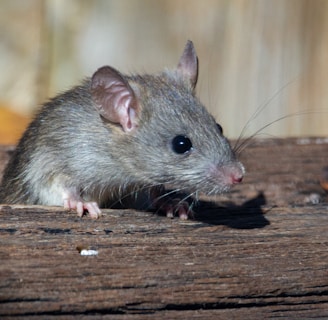Pest-Resistant Cable Solutions for Singapore Ports: Protecting Infrastructure from Termite and Rodent Threats
Protect Singapore's crucial port cables from termites and rodents. Discover how specialized, pest-resistant cable solutions and designs enhance durability and safety for critical infrastructure in humid maritime environments.
BLOGS
5/22/20256 min read


Pest-Resistant Cable Solutions for Singapore Ports: Protecting Infrastructure from Termite and Rodent Threats
Environmental Risk Factors at Singapore Ports
The very conditions that make Singapore's port a bustling center of trade also create an ideal breeding ground for pests. The consistently high humidity and warm temperatures provide the perfect environment for termite colonies to thrive and expand. Simultaneously, the dense logistics activity—constant movement of goods, presence of diverse materials, and numerous sheltered spaces—offers rodents ample opportunities for nesting, foraging, and access to infrastructure. Case insights from across Southeast Asia frequently highlight instances of pest-related cable failures, underscoring the severity and widespread nature of this threat in similar operating environments.
How Pests Threaten Port Crane Cables
The methods by which termites and rodents attack port crane cables are distinct yet equally destructive. Termites, often from underground pathways, will target the polymer insulation and bedding layers of cables. They are drawn to certain compounds within these materials, consuming them or creating tunnels for their colonies. Rodents, on the other hand, frequently gnaw through cable sheaths. This behavior is typically driven by their need for nesting materials, to sharpen their ever-growing incisors, or to create access routes to other areas. The potential consequences of such attacks are severe: short circuits, mechanical failure of cables, crane stoppages, and a range of safety hazards for port personnel.

"Termites tunnel through cable bedding underground, while rodents cause physical damage by gnawing the outer sheath — both leading to insulation failure and safety risks."


Specialized Cable Designs for Pest Resistance
To combat these biological threats, specialized cable designs have emerged as a critical line of defense:
Sheath Compounds with Anti-Termite and Anti-Rodent Additives: A key innovation involves blending chemical deterrents directly into the PVC or Low-Smoke Zero Halogen (LSZH) outer jackets of cables. These additives make the cable material unpalatable or toxic to pests, discouraging them from gnawing or tunneling.
Armored Construction: For enhanced physical protection, cables can incorporate galvanized steel wire armor (GSWA) or interlocked aluminum armor. This robust outer layer provides significant mechanical protection against crushing and impact, and crucially, acts as an impenetrable barrier to both termites and rodents.
Double Sheathing and Non-Metallic Barriers: Another effective strategy is the use of a dual sheath configuration. This involves an inner and outer sheath with a reinforced bedding layer in between. The added layers create a more complex barrier, making it significantly harder for pests to penetrate to the conductor. Non-metallic barriers, often made of tough, resilient materials, can also be integrated into this design.
Low-Smoke Zero Halogen (LSZH) Materials: While primarily chosen for their safety benefits in fire situations (producing less smoke and no toxic halogens), LSZH materials can also be less appealing to pests. Their specific chemical composition and odor may deter some species, providing an ancillary benefit in pest resistance.
Installation and Protection Strategies
Beyond the inherent design of the cables, strategic installation and ongoing protection measures are vital:
Elevated cable trays, sealed conduits, and rodent-proof ducting systems should be prioritized to keep cables off the ground and enclosed, limiting direct access for pests.
Avoiding underground routing in high-risk areas without robust, dedicated barriers is crucial, as underground pathways are often primary routes for termite ingress.
Integration with site-wide pest control protocols ensures a holistic approach, where cable protection is part of a broader pest management strategy for the entire port facility.
Periodic inspection routines, potentially incorporating technologies like thermal imaging or damage sensors, can help detect early-stage pest intrusion or cable degradation, allowing for timely intervention.
Compliance and Industry Standards
Adherence to relevant industry standards and local specifications is fundamental in ensuring robust cable infrastructure. IEC 60502 (for power cables with extruded insulation) and Singapore's own SS 299 standards (for fire-resistant cables) often serve as baseline requirements. In addition, British Standards (BS), such as those within the BS 6724 or BS 7846 series for armored cables or BS 7835 for LSZH armored cables, are frequently referenced in the design and procurement of high-performance cables. These standards provide specifications for construction, materials, and testing, which can inform the selection of cables with inherent resilience against environmental stressors, including pest threats, through their robust design and material properties. Local procurement specifications for port-grade cables should explicitly mandate pest-resistant features. Best practices adopted by major operators like PSA Singapore and other leading ports globally demonstrate the growing recognition of pest resistance as a core requirement for critical infrastructure.
Frequently Asked Questions for Marine Engineers
This section addresses common concerns and provides expert insights for marine engineers dealing with cable infrastructure in pest-prone port environments.
1. Q: What are the primary indicators that termites or rodents are damaging our port cables, and what's the immediate recommended action?
A: For Termites: Look for mud tubes on or near cable routes, unexplained power fluctuations, or visible damage to outer cable sheaths that appear "eaten away." If you find these signs, immediately isolate the affected cable (if safe to do so) and contact a specialized pest control service experienced in industrial settings. Document the damage thoroughly for repair and future preventative measures.
For Rodents: Evidence includes gnaw marks on cable sheaths, exposed conductors, localized power outages, and droppings or nesting materials near cable pathways. The immediate action is similar: isolate the cable if safe, contact pest control, and visually inspect adjacent cables for similar damage. Consider setting up traps (non-lethal where possible) to assess the rodent population.
2. Q: Our existing cable infrastructure doesn't have pest-resistant features. What are the most cost-effective retrofit solutions we can implement without a full cable replacement?
A: While full replacement with pest-resistant cables is ideal, several retrofits can improve protection:
Protective Conduits and Ducting: Encase vulnerable cables in heavy-gauge PVC or galvanized steel conduits. Ensure these are sealed at joints to prevent pest entry.
Cable Tray Modifications: Install solid-bottom cable trays or add covers to existing perforated trays to reduce exposure.
Physical Barriers: Use mesh screens, wire netting, or even specialized rodent-proof brushes at entry points to conduits and buildings.
Repellent Coatings/Tapes: While not as effective as integrated solutions, some repellent coatings or tapes can be applied externally, though their longevity in humid conditions may vary.
Enhanced Site Pest Control: Intensify environmental pest management around critical cable routes, including bait stations (secured and clearly marked) and habitat modification.
3. Q: How do anti-termite and anti-rodent additives in cable sheaths affect the cable's other properties, such as flexibility, UV resistance, or fire performance?
A: Reputable cable manufacturers rigorously test their formulations to ensure that the inclusion of anti-pest additives does not adversely compromise other critical cable properties.
Flexibility: Generally, modern additives are designed to integrate seamlessly without significantly stiffening the sheath.
UV Resistance: Anti-UV stabilizers are separate components, and their performance should not be negatively impacted by anti-pest additives.
Fire Performance (e.g., LSZH): For LSZH cables, the fire performance characteristics (low smoke, zero halogen emission) are paramount and are maintained through careful formulation. The anti-pest additives are selected to be compatible with these properties.
Important Note: Always request technical data sheets from the cable manufacturer to confirm the full range of performance characteristics of any cable with pest-resistant additives.
4. Q: What is the recommended inspection frequency for critical port cables, especially concerning pest damage, and what tools are most effective for detection?
A: For critical port cables in a high-risk environment, a quarterly visual inspection is a good starting point. For particularly vulnerable or historically problematic areas, monthly checks might be warranted.
Visual Inspection: Look for gnaw marks, mud tubes, fraying, discoloration, or any signs of physical damage on the cable sheath and surrounding infrastructure.
Thermal Imaging: Rodent activity (nesting) or cable degradation (due to pest damage or other issues) can cause localized heat build-up, which thermal cameras can detect. This is excellent for non-invasive early detection.
Acoustic Sensors: These can potentially detect gnawing or scurrying sounds within conduits or enclosed spaces, though they are less commonly deployed for general cable inspection.
Endoscopic Cameras: For inspecting inside conduits or tight spaces where visual access is limited.
Damage Sensors (Future Outlook): As mentioned in the conclusion, smart cables with integrated fiber optic or electronic sensors capable of detecting physical intrusion or changes in cable integrity are emerging technologies that will revolutionize early detection.
5. Q: When designing new cable routes, what specific considerations related to pest resistance should be at the forefront for marine engineers?
A: When designing new routes, consider the following:
Elevated Installation: Prioritize routing cables in elevated cable trays or overhead structures, away from ground contact where termites and rodents are more prevalent.
Sealed Pathways: Design for fully sealed conduits, duct banks, and cable entries into buildings. Avoid open trenches unless absolutely necessary, and if so, ensure robust pest barriers are integrated.
Material Selection: Specify cables with inherent pest-resistant features (armored, anti-additives, double sheathing) from the outset.
Accessibility for Inspection: Design routes that allow for easy access for future inspections and maintenance.
Integration with Site Layout: Work closely with civil engineers and pest control specialists to understand the overall site layout and potential pest hotspots, ensuring cable routes avoid these areas or are maximally protected.
Proximity to Vegetation/Debris: Avoid routing cables too close to dense vegetation, refuse areas, or accumulated debris, as these provide cover and resources for pests.
Conclusion
The need for pest-resistant cable design is no longer a luxury but a core part of comprehensive port infrastructure planning in Singapore's challenging environment. By integrating specialized technical solutions—from anti-pest additives and armored construction to double sheathing—and implementing rigorous preventive maintenance strategies, port operators can significantly enhance cable durability, minimize disruptions, and safeguard critical operations. Looking ahead, the development of smart cables with integrated monitoring could revolutionize pest detection, offering early warning of intrusion and further solidifying the resilience of Singapore's vital port infrastructure.
